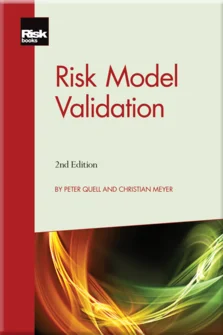How Can a Risk Model Fail?
How Can a Risk Model Fail?
Introduction
Basics of Quantitative Risk Models
Usage of Statistics in Quantitative Risk Models
How Can a Risk Model Fail?
The Concepts of Model Risk and Validation
Model Risk Frameworks
Validation Tools
Regulation
The Short-term Perspective
A Benchmark Model for Market Risk
The Medium-term Perspective
Modelling and Simulation
Data
Model Results
Conclusion
In the first two chapters, we have presented the basics and typical set-up of QRMs. It has been shown that there are numerous ways in which a QRM can fail, and this will now be examined in more detail by proceeding systematically through the key phases of a model’s life, which will be expanded upon as the chapter progresses.
-
In the beginning there is model design. Quantitative risk modelling means making simplifying assumptions about the real world, including human behaviour, and not being aware that the resulting limitations might be an issue.
-
Implementation then represents the QRM as a piece of software on a computer system. There might be inappropriate project management or plain errors in computer code (bugs), but also subtle numerical and statistical issues.
-
Data (eg, portfolio data, market data) then connect the implementation of the model to observations from reality. Data might be missing or incomplete, inaccurate, outdated, temporarily unavailable, asynchronous, misinterpreted or subject to complex (statistical) modelling.
-
Processes constitute sequences of actions that describe how to proceed from the observation of data to the use of model results
Copyright Infopro Digital Limited. All rights reserved.
As outlined in our terms and conditions, https://www.infopro-digital.com/terms-and-conditions/subscriptions/ (point 2.4), printing is limited to a single copy.
If you would like to purchase additional rights please email info@risk.net
Copyright Infopro Digital Limited. All rights reserved.
You may share this content using our article tools. As outlined in our terms and conditions, https://www.infopro-digital.com/terms-and-conditions/subscriptions/ (clause 2.4), an Authorised User may only make one copy of the materials for their own personal use. You must also comply with the restrictions in clause 2.5.
If you would like to purchase additional rights please email info@risk.net











